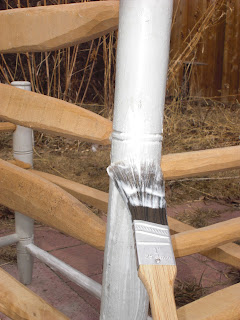Can I just say that I love water?!?! I love the sound of water, I love the feel of water, I love drinking water! I love the idea and challenge of water worldwide!
Have you ever gone a day or even a few hours without water in your house? Its super annoying! Everything is on hold for us when we don't have water. We don't wash dishes, we don't do laundry, we can't even flush the toilets! And you hope it doesn't last long because not many of us save water for such occasions.
Imagining living where there was no running water in your house (our grandparents, maybe our parents, maybe even you can remember what that was like back in the day!), no running water and no easy access to water. Imagine having to walk a mile or several miles a day and carry enough water for your household, enough water for drinking, cooking, washing and laundry. Imagine your water access is a shared pool with the animals. This may be hard for us to imagine but for a large portion of our world this is a reality.
I spent a month in africa in the summer of 2009 in a small community, getting to know the people, how they live, what they struggle with and some of the challenges and goals for their lives. A resounding theme was water and access to clean water! Something that we in north america can not even begin to fathom!
The following are a couple of pages from the scrapbook I made of my time spent in africa (feel free to check out the whole book when you come visit me!):
Water running in the ditches, often gathered by children for use in the home.
The same water that is shared with the ducks below!
The watering hole below contains stagnant standing water and is frequently used as well.
Below is the washroom. Built in people's yards it is covered, moved and a new hole dug when it is full. Which means when it finally does rain in africa, yards are flooded with refuse which contaminates water sources even more.
Children gathering water for their families
Below is a hole dug in a womans yard for her family to use. As the dry season continues, this water source will dwindle and eventually disappear making it more difficult for a single mother of two to provide for her children.
Gathering water from a municipal source. I'm pretty sure this is water that they have to pay for.
Below is a picture of the municipal water source which is piped into people's homes who can afford it.
A well source, comes at a cost to individuals who choose to use it.
The pipe that carries water from the municipal source from Lake Victoria to Mwanza
Water must be contained and saved during rainy season in order to survive dry season
Another source where you have to pay for water


 Consider your footprint and research ways to make changes and help sustain our world for this generation and the generations to come. Check out Waterfootprint.org
Consider helping to build and support wells in developing countries that struggle with access to water.
You can make your footprint smaller and yet have a bigger impact! Take up the challenge!!
Consider your footprint and research ways to make changes and help sustain our world for this generation and the generations to come. Check out Waterfootprint.org
Consider helping to build and support wells in developing countries that struggle with access to water.
You can make your footprint smaller and yet have a bigger impact! Take up the challenge!!



































